Links to external sources may no longer work as intended. The content may not represent the latest thinking in this area or the Society’s current position on the topic.
Frontiers in epigenetic chemical biology
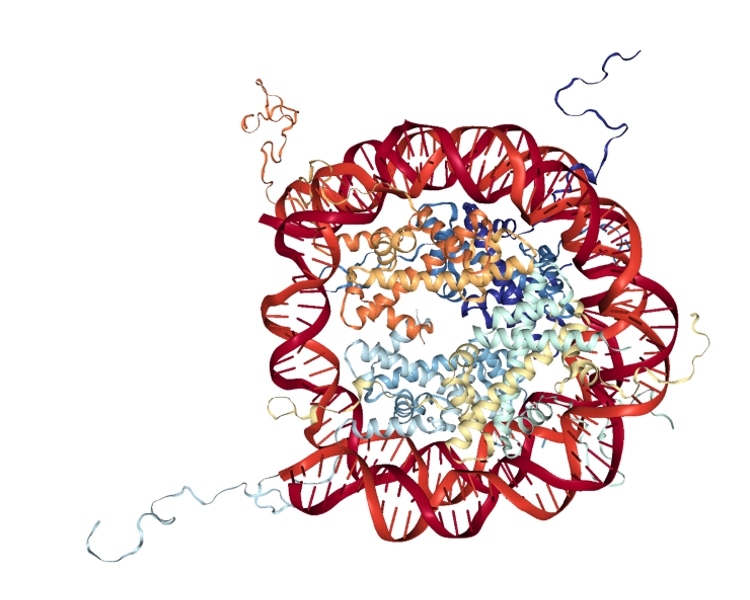
Scientific discussion meeting organised by Professor A Ganesan, Professor Marianne Rots, Dr Paola Arimondo and Dr Akane Kawamura.
Epigenetics refers to the control mechanisms that determine which genes are turned on or off in eukaryotic organisms. Epigenetics is fundamental to normal development and an organism’s response to the environment while its dysregulation is linked to disease conditions. This interdisciplinary meeting brought together chemists and biologists that are internationally leading in cutting edge areas of epigenetics.
Speaker biographies and abstracts are available below. Recorded audio of the presentations are also available below (where speaker permission has been given). Meeting papers are available in an issue of Philosophical Transactions B.
Attending the meeting
This meeting has taken place.
This meeting was followed by a related satellite meeting 'Readers, writers and erasers' held at the Royal Society at Chicheley Hall on 24 - 25 May 2017.
Enquiries: Contact the Scientific Programmes team
Organisers
Schedule
Chair
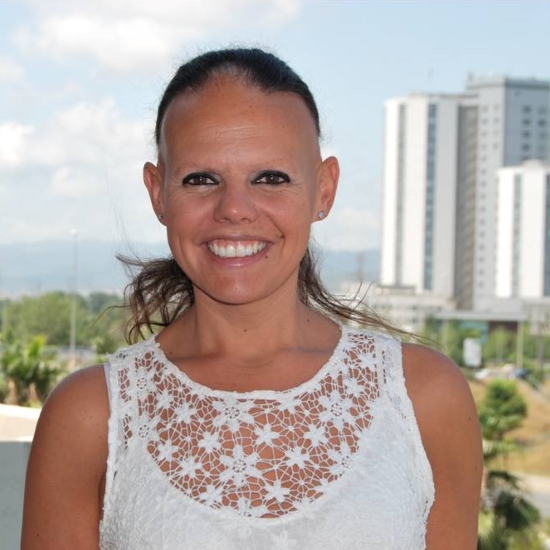
Dr María Berdasco Menéndez, Bellvitge Institute for Biomedical Research, Spain

Dr María Berdasco Menéndez, Bellvitge Institute for Biomedical Research, Spain
Dr María Berdasco is a senior researcher in the Cancer Epigenetics and Biology Program (PEBC) at IDIBELL (Barcelona, Spain) and has been trained on epigenetics during the last decade. Her stay at the Spanish National Cancer Research Center (CNIO, Madrid) during four years (2004-2008) and the actually position at PEBC-IDIBELL allows her to work with the state-of-the-art technology in the field of Cancer Epigenetics. Her current research is devoted to the establishment of the epigenome maps of normal and pathological cells, the study of the interactions between epigenetic modifications and non-coding RNAs, and the development of new epigenetic drugs for human therapy. She is a member of the Scientific Advisory Board of the Spanish Association Against Cancer (AECC), Associate Editor in Clinical Epigenetics and member of the Ethical Committee of the Bellvitge Hospital, among other complementary scientific activities.
| 09:05 - 09:30 |
From antibiotics to histone deacetylase inhibitors: elucidating and exploiting biosynthetic protein-protein interactions
Modular polyketide synthases (PKSs), nonribosomal peptide synthetases (NRPSs) and hybrid PKS-NRPSs are remarkable molecular machines that are responsible for the assembly of numerous bioactive natural products with a range of important applications in medicine and agriculture. These assembly line multienzymes typically consist of several subunits, which must interact specifically with each other to ensure a high degree of fidelity in the overall biosynthetic process. Over the past decade it has become apparent that interactions between subunits are typically mediated by structurally complementary N- and C-terminal docking domains that engage in specific protein-protein interactions. In this lecture, Professor Challis will describe the efforts to understand the role played by specific protein-protein interactions in a hybrid PKS-NRPS responsible for the assembly of enacyloxin IIa, an unusual antibiotic with promising activity against Acinetobacter baumannii. The results of these studies reveal that a pair of complementary docking domains, previously thought to mediate subunit interactions in only a handful of NRPSs and hybrid PKS-NRPSs, are in fact present in many different systems, including the assembly line responsible for the biosynthesis of the clinically-used histone deacetylase inhibitor romidepsin. It has been shown that non-cognate docking domains belonging to this class are able to interact productively with each other. The implications of these findings for biosynthetic engineering approaches to the production of novel analogues of romidepsin and other clinically-important natural products will be discussed. 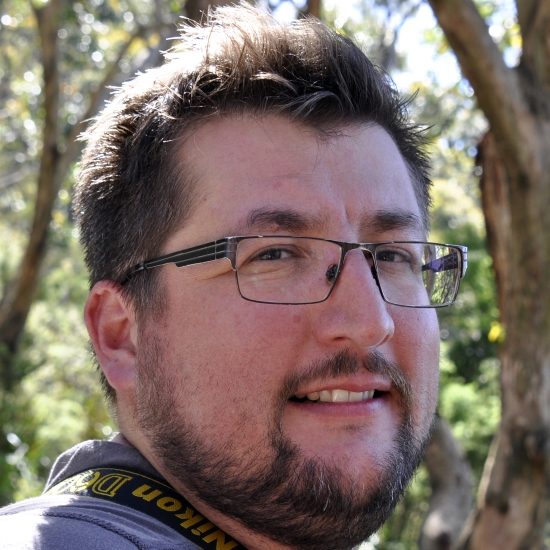
Professor Gregory Challis, University of Warwich, UK; Monash University, Australia

Professor Gregory Challis, University of Warwich, UK; Monash University, AustraliaGreg Challis was awarded a DPhil by the University of Oxford for research completed under the supervision of Professor Sir Jack Baldwin FRS. Following postdoctoral studies with Professor Craig Towsend at Johns Hopkins University and Professor Keith Chater FRS at the John Innes Centre, he was appointed as lecturer in Chemical Biology in the Department of Chemistry at the University of Warwick. In 2006 he was promoted to a personal chair, and in 2016 he was appointed as a Monash Warwick Alliance Professor in the Department of Chemistry at Warwick and the Department of Biochemistry and Molecular Biology at Monash. His research encompass diverse aspects of the chemistry and biology of bioactive natural products and has been recognised by the Gabor Medal and a Wolfson Research Merit Award from the Royal Society. |
|
|---|---|---|
| 09:30 - 09:45 | Discussion | |
| 09:45 - 10:15 |
HDAC inhibitors, progress and prospects
Acylation of lysine residues is perhaps the most important post-translational modification of proteins after phosphorylation. In nucleosomes, the N-terminal tails of histone proteins primarily undergo acetylation but also linkage to a variety of short chain carboxylic acids as well as small proteins such as ubiquitin and SUMO. The action of lysine deacylases, grouped into histone deacetylases (HDACs, 11 human isoforms) and sirtuins (SIRTs, 7 human isoforms) reverses protein acylation and promotes transcriptional gene silencing. As disruption of the balance between acylation and deacylation is manifested in many human diseases, HDAC inhibition has become an important drug discovery strategy. Five inhibitors that reversibly bind to the active site zinc cation are approved drugs for cancer and multiple other candidates are in clinical trials. The presentation will focus on HDAC inhibitors from the group based on natural products and synthetic scaffolds with examples of isoform selectivity and therapeutic indications outside cancer. 
Professor A. Ganesan, University of East Anglia, UK

Professor A. Ganesan, University of East Anglia, UKGanesan graduated with a BSc (Hons) in Chemistry from the National University of Singapore and a PhD from the University of California-Berkeley supervised by Clayton H. Heathcock. After postdoctoral research with Gregory Verdine at Harvard University, he was a Senior Research Chemist at the Centre for Natural Product Research, Singapore (1993-96) and Principal Investigator at the Institute of Molecular and Cell Biology, Singapore (1996-99). In 1999 he joined the University of Southampton as a Reader in the Combinatorial Chemistry Centre for Excellence. In 2011 he became the Chair of Chemical Biology at the University of East Anglia’s School of Pharmacy. His research is focused on chemical biology, medicinal chemistry and organic synthesis. Ganesan is co-founder of the drug discovery company Karus Therapeutics, Chair of the EU COST Action CM1406 Epigenetic Chemical Biology and a member of the IUPAC Subcommittee for Medicinal Chemistry and Drug Development. |
|
| 10:15 - 10:30 | Discussion | |
| 10:30 - 11:00 | Coffee | |
| 11:00 - 11:30 |
Metabolic regulation of SIRT2, a dual-specificity deacylase
Acetylation of proteins represents a widespread phenomenon from histones to many other proteins and is involved in fundamental processes such as epigenetics and signal transduction. SIRT2 is a member of the NAD-dependent lysine deacetylase family and regulates several biological processes such as epigenetics and cell migration. The activity of SIRT2 is upregulated by the cellular NAD+, but the existence of endogenous metabolites inhibiting SIRT2 remains unknown. The group recently identified selective SIRT2 inhibitors from the RIKEN NPDepo chemical library. X-ray crystal structure of SIRT2 in complex with the synthetic inhibitors revealed that SIRT2 possesses a deep hydrophobic cavity behind its substrate-binding pocket, to which a long-chain fatty acyl group may potentially bind. Indeed, the crystallographic analysis of SIRT2 in complex with myristoylated lysine peptide revealed that the myristoyl group of the peptide was accommodated in the hydrophobic cavity similar to that created by the SIRT2 inhibitors. Furthermore, the group could detect the reaction intermediate in the co-crystal in the presence of NAD+, demonstrating the catalytic mechanism for long chain de-fatty acylation by SIRT2. These observations prompted them to screen cellular metabolites for endogenous SIRT2 inhibitors. In this presentation, Professor Yoshida will report identification of lipid metabolites that strongly inhibit SIRT2 and their mode of action revealed by X-ray crystallography. The observation suggests that dual-specificity deacylase activity of SIRT2 is regulated by a variety of endogenous metabolites. 
Professor Minoru Yoshida, RIKEN, Japan

Professor Minoru Yoshida, RIKEN, JapanMinoru Yoshida is Chief Scientist at RIKEN. He received his PhD degree from the University of Tokyo in 1986, where he started mode of action studies of natural products. He identified histone dacetylase and Crm1 exportin 1 as the specific targets of trichostatin A (TSA) and leptomycin B (LMB), respectively, which greatly contributed to the field of epigenetics and nuclear transport. After he was promoted to Associate Professor in 1995 in the University of Tokyo, he moved to RIKEN and started the Chemical Genetics Laboratory as Chief Scientist in 2002. In 2013, he was also appointed as Group Director, Chemical Genomics Research Group at RIKEN CSRS. At RIKEN, he identified spliceostatin, the first inhibitor of pre-mRNA splicing, and many other unique compounds and their molecular targets. His major interest is the interface between chemistry and biology. |
|
| 11:30 - 11:45 | Discussion | |
| 11:45 - 12:15 |
Regulation of protein biosynthesis by oxygen
Oxygenases are involved in the biosynthesis of a range of natural products where they often catalyse synthetically impossible reactions such as occur in beta-lactam biosynthesis. Oxygenases also play important roles in the physiology of humans. In animals the response to limiting oxygen availability is mediated by the hypoxia inducible transcription factor (HIF). Both the levels and activity of HIF are regulated by its post-translational hydroxylation of conserved prolyl and asparaginyl residues. These modifications are catalysed by Fe(II) and 2-oxoglutarate dependent oxygenases which are also involved in nucleosome and ribosome modifications. The talk will discuss the biochemical and structural features that enable 2OG oxygenase catalsyis in a range of biosynthetic/biological systems, and to act as sensors in some contexts. The talk will describe evidence that post-translational hydroxylations, are widespread. 
Professor Christopher Schofield FRS, University of Oxford, UK

Professor Christopher Schofield FRS, University of Oxford, UKChris Schofield studied for a first degree in chemistry at the University of Manchester (1979-1982). In 1982 he moved to Oxford to study for a DPhil with Professor Jack Baldwin on the synthesis and biosynthesis of antibiotics. In 1985 he became a Departmental Demonstrator in the Dyson Perrins Laboratory, Oxford University followed by his appointment as Lecturer in Chemistry and Fellow of Hertford College in 1990. In 1998 he became Professor of Chemistry, and in 2011 was appointed Head of Organic Chemistry. He is a Fellow of the Royal Society of Chemistry and of the Royal Society. His research group works at the interface of chemistry, biology and medicine. His work has opened up new fields in antibiotic research, oxygen sensing and gene regulation. His work has identified new opportunities for medicinal intervention that are being pursued by numerous academic and commercial laboratories. |
|
| 12:15 - 12:30 | Discussion |
Chair

Professor Marianne Rots, University Medical Center Groningen, The Netherlands

Professor Marianne Rots, University Medical Center Groningen, The Netherlands
Professor Marianne Rots has been professor of Molecular Epigenetics since 2010 in the Department of Pathology and Medical Biology at the University Medical Center in Groningen, the Netherlands. She studied Medical Biology at the University of Amsterdam, obtained her PhD at the VU Medical Center, Amsterdam in 2000 was trained as postdoctoral fellow in the Gene Therapy Center of the University of Alabama, Birmingham, USA. In 2001, she was recruited to the School of Pharmacy, and in 2007 to the University Medical Center, to start her own lab combining gene therapy with epigenetics to establish Epigenetic Editing). So far, she graduated 9 PhD students (of with two with the highest distinction), is member of Dutch grant reviewing committees, serves as commissioning editor in the editorial board of Clinical Epigenetics and acts as research coordinator of an H2020-EU-ITN and is vice-chair in a EU COST action.
| 13:30 - 14:00 |
Design and activity of DNA methylation inhibitors in cancer cells
Dr Arimondo’s group has designed novel non-nucleoside inhibitors of DNA methyltransferases which are able to demethylate and reactivate tumour suppressor genes in cancer cell lines. The group applied three chemical strategies: high-throughput screening of chemical libraries; rational drug design based on molecular modelling; and the pharmocomodulation of known inhibitors. The cellular consequences of this DNA demethylation are studied in comparison to nucleoside inhibitor decitabine. Altogether, four new families of DNMT inhibitors were optimised and studied. These studies provide insights of the next-generation of DNMT inhibitors. 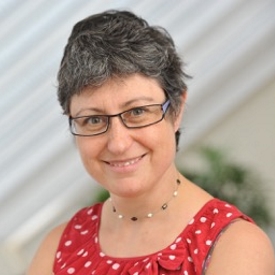
Dr Paola B. Arimondo, CNRS, Institut Pasteur, EpiCBio, France

Dr Paola B. Arimondo, CNRS, Institut Pasteur, EpiCBio, FranceDr Paola B. Arimondo studied Chemistry at the University of Pisa, Italy, and received a PhD in Biophysics at the MNHN in Paris. In 2001, she was recruited by the CNRS. Her research focused on the interactions between nucleic acids and proteins and their modulation by small chemical molecules, resulting in site-specific ‘DNA scissors’ in cancer cells. After a six-month sabbatical in 2005 at the University of California in Berkeley, she initiated a new project aiming at the epigenetic control of gene expression in cancers. In 2011, she was recruited to lead the Laboratory of Epigenetic Targeting of Cancer, a joint public-private Laboratory between the CNRS and Pierre Fabre Laboratories, in Toulouse, France. She now develops chemical modulators of DNA and histone methylation to study the aberrant epigenetic mechanisms in cancer and identify new targets or biomarkers. Dr Arimondo is co-author of 92 publications and of 9 patents, was awarded the ‘Médaille de Bronze’ of CNRS, ‘Prix de l’Encouragement’ of the French Société de Chimie Thérapeutique, and the ‘Marie Curie Excellence Award’ of the European Community. She is actually Oversea Fellow at the Churchill College in Cambridge UK. |
|---|---|
| 14:00 - 14:15 | Discussion |
| 14:15 - 14:45 |
Identification and characterisation of methylated deoxyadenosines in vertebrates
Methylation of cytosine deoxynucleotides is a well-established epigenetic mark, but in higher eukaryotes much less is known about modifications affecting other deoxynucleotides. Dr Koziol reports the detection of N-6-methyl-deoxyadenosine in vertebrate DNA, such as frogs, but also in other species including mouse and human. This methylome analysis reveals that dA6m is widely distributed across the eukaryotic genome, is present in different cell types, but commonly depleted from transcriptional start sites, in particular gene exons. Dr Koziol discusses an association between dA6m and genes involved in neuronal pathways, as well as identify a potential dA6m motif in the vertebrate genome. Overall, Dr Koziol believes dA6m could be implicated in regulating gene transcription, but more work is required to elucidate this function in vertebrates. 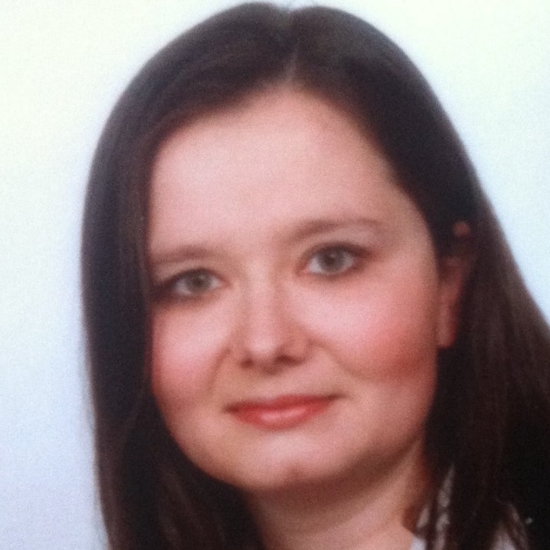
Dr Magdalena Koziol, University of Cambridge, UK

Dr Magdalena Koziol, University of Cambridge, UKMagdalena Koziol undertook her BSc studies in Medical Genetics at the University of Leicester. She then did her PhD, as part of the 4-year PhD Programme in Developmental Biology at the University of Cambridge. Her PhD thesis was focused on the identification of nuclear reprogramming factors, supervised by Sir John Gurdon. After obtaining industrial experience at the Boston Consulting Group, she undertook postdoctoral work in Harvard and Yale, where she worked on long-non-coding RNAs and zygotic gene activation. Back at the University of Cambridge, she discovered the existence of methylated deoxyadenosines in vertebrate DNA, widening the field of epigenetics. She is currently establishing her independent laboratory, with a vision to identify and study the function of novel DNA modifications. |
| 14:45 - 15:00 | Discussion |
| 15:00 - 15:30 | Tea |
| 15:30 - 16:00 |
Deregulation of non coding RNA in cancer and their interactions with histone modifiers
Protein-coding genes are the best studied sequences of the genome; however, coding exons only account for less than a 1.5% of the genome. A large fraction of the genome is constituted by non-coding elements that might have critical functional roles, including gene regulatory regions, origins of replication or non-coding RNAs (ncRNAs), among others. Although initially considered non-functional elements (‘the dark matter’), recent evidence suggests that ncRNAs play major biological roles in cellular biology, development and homeostasis. Several studies have demonstrated that lncRNAs are deregulated in cancer tissues and other human disorders. In fact, ncRNAs are considered fundamental epigenetic players, together with CpG methylation and histone modifications, as differential expression of ncRNA might play a role in targeting epigenetic writers and erasers to their target genes. Furthermore, ncRNAs may themselves be targets of epigenetic disruption. In this regard, it is well established that several ncRNAs (including long-ncRNAs and microRNAs) are silenced by CpG hypermethylation of their regulatory regions in cancer. As a consequence of their increasing role in human pathogenesis, new uses of ncRNAs biology are being explored including their potential as biomarkers of prognosis and response to chemotherapy but also as therapeutic targets. 
Dr María Berdasco Menéndez, Bellvitge Institute for Biomedical Research, Spain

Dr María Berdasco Menéndez, Bellvitge Institute for Biomedical Research, SpainDr María Berdasco is a senior researcher in the Cancer Epigenetics and Biology Program (PEBC) at IDIBELL (Barcelona, Spain) and has been trained on epigenetics during the last decade. Her stay at the Spanish National Cancer Research Center (CNIO, Madrid) during four years (2004-2008) and the actually position at PEBC-IDIBELL allows her to work with the state-of-the-art technology in the field of Cancer Epigenetics. Her current research is devoted to the establishment of the epigenome maps of normal and pathological cells, the study of the interactions between epigenetic modifications and non-coding RNAs, and the development of new epigenetic drugs for human therapy. She is a member of the Scientific Advisory Board of the Spanish Association Against Cancer (AECC), Associate Editor in Clinical Epigenetics and member of the Ethical Committee of the Bellvitge Hospital, among other complementary scientific activities. |
| 16:00 - 16:15 | Discussion |
| 16:15 - 16:45 |
DNA bases beyond Watson and Crick
Our genetic system is constructed based on four canonical nucleobases: adenosine, cytosine, guanosine and thymine. Next to these bases a number of non-canonical bases have recently been discovered that seem to regulate transcriptional activity. This information level is established by the new DNA bases hmC, fC and caC. In the lecture Professor Carell will discuss the most recent results regarding the distribution and function of these new bases. He will show that the lack of oxygen, as present in many tumour tissues, is strongly limiting formation of these bases and that this in turn effects the activity of key oncogenes in oxygen derived tumours. Professor Carell will show data that link formation of the new bases to other metabolic processes and he will show isotope tracing studies that reveal the faith of the new bases in the genome after their formation. Many of the results rely on the use of mass spectrometry and this will be explained together with the chemical synthesis of phosphoramidites of the new bases and the development of new reagents for mass spectrometric based proteomics studies. 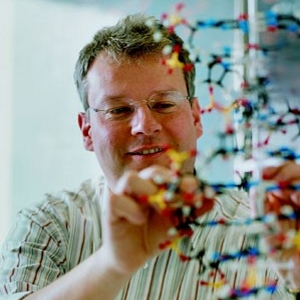
Professor Thomas Carell, Ludwig Maximilians Universität München, Germany

Professor Thomas Carell, Ludwig Maximilians Universität München, GermanyThomas Carell was born in Herford (Germany) in 1966. He is married and father of three children. His academic career in chemistry began at the Universities of Münster and Heidelberg. In 1993 he obtained his doctorate with Professor H. A. Staab at the Max Planck Institute of Medical Research. After postdoctoral training with Professor J. Rebek at MIT (Cambridge, USA) in 1993-1995, Thomas Carell moved to the ETH Zürich (Switzerland) into the group of Professor F. Diederich to start independent research. He obtained his habilitation in 1999. In 2000 he accepted a full professor position for Organic Chemistry at the Philipps-Universität in Marburg (Germany). In 2004 he moved to the Ludwig-Maximilians-Universität (LMU) in Munich (Germany) where he is heading a research group in chemical biology focused to analyse the chemistry of epigenetic programming in DNA and RNA. Thomas Carell is a member of the German National Academy Leopoldina and of the Berlin-Brandenburgische Academy of Arts and Sciences. He is the recipient of the Cross of Merit from the Federal Republic of Germany. |
| 16:45 - 17:00 | Discussion |
Chair
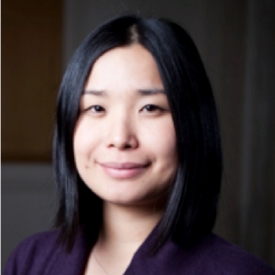
Dr Akane Kawamura, University of Oxford, UK

Dr Akane Kawamura, University of Oxford, UK
Akane Kawamura, DPhil, is a Dorothy Hodgkin Research Fellow and a University Research Lecturer, based in the Departments of Chemistry and Radcliffe Department of Medicine at the University of Oxford. After her undergraduate degree in Chemistry, she received her DPhil in Pharmacology, working with Professor Edith Sim on the biochemical and biophysical investigations on Phase II drug metabolising enzymes. She spent three years in industry as a senior researcher, where she led a number of drug discovery projects across a wide range of therapeutic areas. In 2009 she returned to academia to work with Professor Chris Schofield FRS at the University of Oxford on chemical biology of epigenetic regulation. She was awarded a BHF CRE Fellowship in 2012 and a Dorothy Hodgkin Fellowship in 2013. Her group’s research focuses on the biochemical / cellular studies of histone demethylases, the development of chemical probes against epigenetic protein targets, and the development of novel peptide-based target validation approaches.
| 09:00 - 09:30 |
Epigenetic approaches to overcome cancer drug resistance: a moving target
Epigenetic events, somatically inherited through cell division, are potential drivers of acquired drug resistance in cancer. The high rate of epigenetic change in tumours generates diversity in gene expression patterns that can rapidly evolve through drug selection during treatment, leading to acquired resistance. Furthermore, persistent cell populations may survive drug exposure and have changes in gene expression associated with histone marks and chromatin modifying enzymes: these cells are reversibly drug tolerant, but can acquire resistance after further growth that becomes fixed by DNA methylation. Pharmacological reversion of repressive DNA and histone epigenetic marks can lead to re-sensitisation of tumours to chemotherapy in experimental models and some epigenetic drugs have entered clinical trials as resistance modulators with mixed success. Given the complexity and diversity of tumours, it is perhaps unrealistic to expect that drug resistance can ever be completely overcome. However, prevention of emergence of resistance by targeting epigenetically poised states, rather than reversal of a fixed epigenetic state, may be a more fruitful approach. Patient-derived xenograft models of acquired resistance, combined with gene targeted approaches such as CRISPR RNA-guided endonuclease Cas9, locus specific editing of histone modifications or chemical biology approaches using an epigenetic targeted pharmacopeia, that allow functional consequences of gene or mechanism specific intervention to be examined, has potential to provide innovation and insight into mechanisms of acquired resistance. 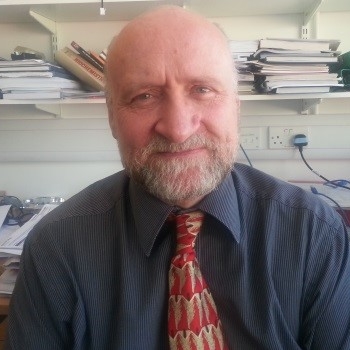
Professor Robert Brown, Imperial College London, UK

Professor Robert Brown, Imperial College London, UKRobert (Bob) Brown is Professor of Translational Oncology, Department of Surgery & Cancer, Imperial College London, with a joint Team Leader post in Section of Medicine at the Institute of Cancer Research, London. He graduated from Edinburgh University (BSc in Biological Sciences) and did his PhD at the MRC Radiobiology Unit, Harwell. Following a postdoctoral fellowship at the German Cancer Research Centre Heidelberg, Germany, he worked at the Beatson Laboratories Glasgow, becoming Director of Laboratory Research in the Centre for Oncology and Applied Pharmacology, Glasgow University, before moving to his current post. Professor Brown’s work focuses on epigenetics, patient stratification and drug resistance research, with a particular focus on solid tumours, particularly ovarian cancer. He facilitates development of compounds which can reverse epigenetic silencing and is using molecular biomarker assays to aid the preclinical development and clinical use of these compounds. Recent research interests include the effect of DNA damaging agents on the epigenome, epigenetic targeting using CRISPR and whether systems oncology approaches can be used to monitor and stratify patients for targeted treatments. |
|
|---|---|---|
| 09:30 - 09:45 | Discussion | |
| 09:45 - 10:15 |
Rewriting a gene's epigenetic signal at will
Epigenome-wide Association Studies have resulted in epigenetic mutations which might serve as diagnostic, prognostic, or even therapeutic targets. To functionally validate and further exploit such epigenetic biomarkers as therapeutic targets, epigenetic editing provides a powerful approach. In epigenetic editing, epigenetic writers or erasers are fused to DNA binding platforms, such as engineered Zinc Finger Proteins (ZFPs) or the recently introduced CRISPR-Cas platform. CRISPR-Cas is based on designed RNA molecules which guide a nuclease (Cas9) to its target DNA site. Upon mutation of the nuclease activity (dCas), dCas can be fused to transcriptional effectors. Such Artificial Transcription Factors (ATFs) can modulate the expression of any gene at will, although the effects are presumed to be transient. To induce sustained gene expression modulation, we exploit these DNA binding platforms to target epigenetic effector domains to genomic loci of interest. Re-expression of a tumour suppressor gene generally is effective and induces apoptosis. Repression of gene expression can also easily be obtained. Guidelines on how to stably interfere with epigenetic gene regulation, however, are currently largely lacking. These data demonstrate feasibility of long-term gene repression as well as re-expression. Epigenetic Editing thus opens novel therapeutic avenues, realising the curable genome concept. 
Professor Marianne Rots, University Medical Center Groningen, The Netherlands

Professor Marianne Rots, University Medical Center Groningen, The NetherlandsProfessor Marianne Rots has been professor of Molecular Epigenetics since 2010 in the Department of Pathology and Medical Biology at the University Medical Center in Groningen, the Netherlands. She studied Medical Biology at the University of Amsterdam, obtained her PhD at the VU Medical Center, Amsterdam in 2000 was trained as postdoctoral fellow in the Gene Therapy Center of the University of Alabama, Birmingham, USA. In 2001, she was recruited to the School of Pharmacy, and in 2007 to the University Medical Center, to start her own lab combining gene therapy with epigenetics to establish Epigenetic Editing). So far, she graduated 9 PhD students (of with two with the highest distinction), is member of Dutch grant reviewing committees, serves as commissioning editor in the editorial board of Clinical Epigenetics and acts as research coordinator of an H2020-EU-ITN and is vice-chair in a EU COST action. |
|
| 10:15 - 10:30 | Discussion | |
| 10:30 - 11:00 | Coffee | |
| 11:00 - 11:30 |
Expanding the programmability of DNA recognition
The recent discovery of oxidized 5-methylcytosine (mC) derivatives in mammalian genomes and their involvement in key biological processes has created a need for methods that allow for their simple analysis at user-defined genomic positions. The group has recently started to explore the potential of transcription-activator-like effectors (TALEs) as programmable DNA-binding receptors for the analysis of 5mC and its derivatives. TALEs recognize DNA via the major groove that contains unique chemical information for each of the nucleobases and thus offer an ‘expanded programmability of DNA recognition’. Professor Summerer here reports on the engineering of new nucleobase selectivities into TALEs, and their use for epigenetic nucleobase analysis in genomes by affinity enrichment. These studies establish TALEs as the only receptor molecules capable of a direct isolation of user-defined epigenetic DNA biomarkers from genomes. 
Professor Daniel Summerer, Technical University Dortmund, Germany

Professor Daniel Summerer, Technical University Dortmund, GermanyDaniel Summerer, obtained his diploma in chemistry in 2000 at the University of Bonn with Michael Famulok. In the group of Andreas Marx, he earned a PhD degree in 2004 in the fields of nucleic acid chemistry and DNA polymerase design. After a postdoc with Peter G. Schultz at the Scripps Research Institute dealing with genetic code expansion, he worked as a Project Manager and Head of Application Development in the German//US biotech industry. In 2011 he became a fellow of the Zukunftskolleg at the University of Konstanz and later was appointed acting Professor for Organic Chemistry at the University of Konstanz. Since 2015 he is Professor for Chemical Biology at the Technical University Dortmund. His scientific interests include nucleic acid and protein chemistry, molecular evolution and epigenetics. |
|
| 11:30 - 11:45 | Discussion | |
| 11:45 - 12:15 |
The chemistry, structure and function of modified DNA bases
It is now evident that there are numerous chemical modifications that occur naturally in DNA across species. These modifications can be incorporated and removed by natural enzymes and they can alter the structural and functional properties of the genome. Sir Shankar will discuss some recent studies that developed chemical methodologies to detect and decode modified bases in the genome and the applications of such methodologies to elucidate their roles in biology. 
Sir Shankar Balasubramanian FMedSci FRS, University of Cambridge, UK

Sir Shankar Balasubramanian FMedSci FRS, University of Cambridge, UKSir Shankar Balasubramanian is the Herchel Smith Professor of Medicinal Chemistry at the University of Cambridge and senior group leader at the Cambridge Institute. He is a nucleic acids expert who is recognised for contributions to chemistry and its application to the biological and medical sciences. He is a co-inventor of the leading next generation nucleic acid sequencing methodology, Solexa sequencing (now Illumina) that has made routine, accurate, low-cost sequencing of human genomes a reality and has revolutionised biology. He has made seminal contributions to the identification, elucidation and manipulation of non-coding genetic elements, particularly four-stranded structures called G-quadruplexes. His work on the intervention of nucleic acid function using small molecules has revealed a number of molecular mechanisms that can be exploited, e.g. to modulate the biology of cancer. More recently, inventive contributions from his group include the development of methods for the quantitative analysis of 5-methylcytosine, 5-hydroxymethylcytosine and 5-formylcytosine at single base resolution. Sir Shankar was knighted in the Queen’s New Year’s Honours in 2017 for his services to science and medicine. |
|
| 12:15 - 12:30 | Discussion |
Chair

Professor A. Ganesan, University of East Anglia, UK

Professor A. Ganesan, University of East Anglia, UK
Ganesan graduated with a BSc (Hons) in Chemistry from the National University of Singapore and a PhD from the University of California-Berkeley supervised by Clayton H. Heathcock. After postdoctoral research with Gregory Verdine at Harvard University, he was a Senior Research Chemist at the Centre for Natural Product Research, Singapore (1993-96) and Principal Investigator at the Institute of Molecular and Cell Biology, Singapore (1996-99). In 1999 he joined the University of Southampton as a Reader in the Combinatorial Chemistry Centre for Excellence. In 2011 he became the Chair of Chemical Biology at the University of East Anglia’s School of Pharmacy. His research is focused on chemical biology, medicinal chemistry and organic synthesis. Ganesan is co-founder of the drug discovery company Karus Therapeutics, Chair of the EU COST Action CM1406 Epigenetic Chemical Biology and a member of the IUPAC Subcommittee for Medicinal Chemistry and Drug Development.
| 13:30 - 14:00 |
Protein methyltransferase inhibitors as precision cancer therapeutics
The protein methyltransferases (PMTs) constitute a large class of enzymes that catalyse the methylation of lysine or arginine residues on histones and other proteins. A number of PMTs have been shown to be genetically altered in cancers through, for example, gene amplification, chromosomal translocations and point mutations. The group is approaching drug discovery efforts against these enzymes in two distinct ways. First, they are approaching the PMTs as a target class, taking advantage of common aspects of their enzymology to develop a broad platform for small molecule inhibitor discovery. The second approach targets specific enzymes that are genetically altered in cancer, and for which strong evidence of an oncogenic role of enzymatic activity has been established. To date, the group has advanced small molecule inhibitors against three PMT targets to human clinical trials: pinometostat, an inhibitor of DOT1L for MLL-rearranged leukaemia; tazemetostat, an inhibitor of EZH2 for non-Hodgkin’s lymphoma, INI1-negative solid tumours and mesothelioma; and EPZ015938/GSK3326595, an inhibitor of PRMT5 for non-Hodgkin’s lymphoma and solid tumours. Preclinical and clinical data for these investigational drugs will be presented. 
Professor Robert A. Copeland, Epizyme, Inc, USA

Professor Robert A. Copeland, Epizyme, Inc, USARobert A. Copeland, PhD is President of Research and Chief Scientific Officer at Epizyme, Inc. His research interest is in elucidating the determinants of drug recognition by their biological targets, and the use of this information in the discovery and design of new medicines. He has contributed to drug discovery and development efforts leading to 18 drug candidates entering human clinical trials. These include the cancer drugs foretinib, afuresertib, pinometostat, tazemetostat, Tafinlar (dabrafenib) and Mekinist (trametinib) and the antibiotic Altabax (retapamulin). Dr Copeland has contributed more than 200 publications to the scientific literature, holds 13 issued US patents and has authored 5 books in the areas of protein science and enzymology. In 2016 Dr Copeland was elected a Fellow of the American Association for the Advancement of Science (AAAS). |
|
|---|---|---|
| 14:00 - 14:15 | Discussion | |
| 14:15 - 14:30 |
Shifting the balance: epigenetic modulators in drug development
Post-translational modifications of histones are closely associated with changes in transcription. Changes in histone lysine methyl marks are among the most prominent changes, and are mediated by methyltransferases and demethylases. Many diseases are characterised by transcriptional imbalances, and interference with epigenetic targets can be used to modulate these aberrant profiles. Here Dr Maes will report on the advances in the development of ORY-1001/RG6016, a potent selective inhibitor of LSD1, for oncology; and of ORY-2001, a dual inhibitor of LSD1 and MAO-B, for the treatment of neurodegenerative diseases. LSD1 inhibition compromises the leukaemic stem cell capacity in AML, and drives differentiation of blasts towards a more mature phenotype. Using a chemical probe for LSD1, it was initially shown that MLL translocated cells exhibit special sensitivity to LSD1 inhibition. Treating AML cells with the potent selective LSD1 inhibitor ORY-1001, the group confirmed responses at subnanomolar to nanomolar concentrations, and revealed that phenotypic changes were accompanied by a shift of the gene expression partially rebalancing the transcriptional profile towards that of normal monocytes/macrophages. The group has developed an activity based LSD1 chemoprobe and used it to pull down the protein and to unravel its network of interacting factors in AML. ORY-1001 has recently finalised a Phase I/IIa trial in relapsed or refractory acute leukaemia and these data corroborate the in vivo potency of ORY-1001 as an AML differentiating agent. LSD1 inhibitors are also highly active in SCLC, and ORY-1001/RG6016 is currently in a Phase I trial in this indication. The potential role of LSD1 as a drug target is not limited to cancer. LSD1 is expressed in the brain and has a dual role in neuronal stem cell proliferation and neuronal differentiation / neurite extension. Using a proprietary chemoprobe based target engagement assay, the group has shown that they can modulate LSD1 activity in the brain using the brain penetrant dual inhibitor ORY-2001. Treatment with ORY-2001 in SAMP8 mice, a model for accelerated ageing and Alzheimer’s disease, rescues memory in the novel object recognition test. Again, it was found that phenotypic changes were accompanied by a shift and partial restoration of gene expression patterns in the hippocampus. A Phase I trial with ORY-2001 to assess the compounds’ tolerability, pharmacokinetics and pharmacodynamics in healthy young and elderly volunteers is nearing finalisation. 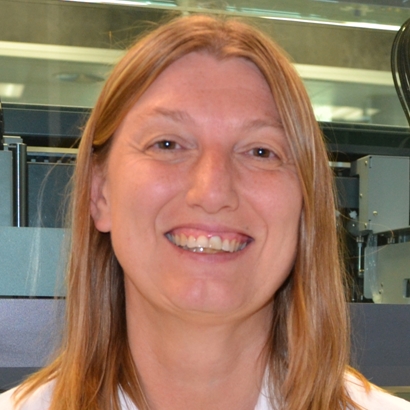
Dr Tamara Maes, Oryzon Genomics S.A., Spain

Dr Tamara Maes, Oryzon Genomics S.A., SpainBSc in Chemistry and obtained a PhD in biotechnology in the Laboratory of Genetics at the University of Ghent, Belgium; on the Genetics of Development. After a post-doc in the CSIC in Spain, she founded ORYZON GENOMICS together with Dr. Carlos Buesa, and has served as CSO since inception. Launched originally as a functional genomics company, Oryzon initiated a proprietary drug development program in 2008 and is a world leader in the development of KDM1A inhibitors. ORY-1001, the first selective KDM1A inhibitor to reach the clinic, was licensed to Roche has recently finalized a Phase I/IIa for acute leukemia. ORY-2001, a dual KDM1A/MAO-B inhibitor in development for treatment of neurodegenerative conditions including Alzheimer disease is nearing completion of a Phase I trial in healthy volunteers, and is expected to initiate Phase II studies in the second half of 2017. ORYZON continues to explore epigenetics target as a venue for treatment and has several additional KDM inhibitors at different stages of preclinical development. |
|
| 14:45 - 15:00 | Discussion | |
| 15:00 - 15:30 | Tea | |
| 15:30 - 16:00 |
Selectivity: design and serendipity for epigenetic targets
The family of bromodomain-containing proteins is an emerging class of epigenetic regulators that act as readers of the ‘histone code’ via recognition of proteins that have been specifically acetylated by histone acetyltransferases. Fuelled by the publication, in 2010, of high affinity inhibitors of the BET bromodomain subfamily of protein that have diverse therapeutic potential, this protein family has become an intensive area of research in industry and academia. Over 200 papers have been published since 2016, and BET compounds are now in clinical trials for oncology. However, despite this impressive demonstration of the potential of the BET subfamily as drug targets the function of other family members remain poorly understood. To help to understand the potential of other bromodomains the group has developed chemical probes for use in cellular biology studies. Some properties of good chemical probes (potency, selectivity and cell permeability) may need to be equivalent to or even better than drugs, so their discovery can present significant challenges. This presentation will include the structural, computational and medicinal chemistry optimisation of fragment hits to chemical probes for the bromodomains of BRPF1 and ATAD2. How selectivity is assessed for multidomain complexes and the broader experience of using chemical probes for target validation will also be discussed. 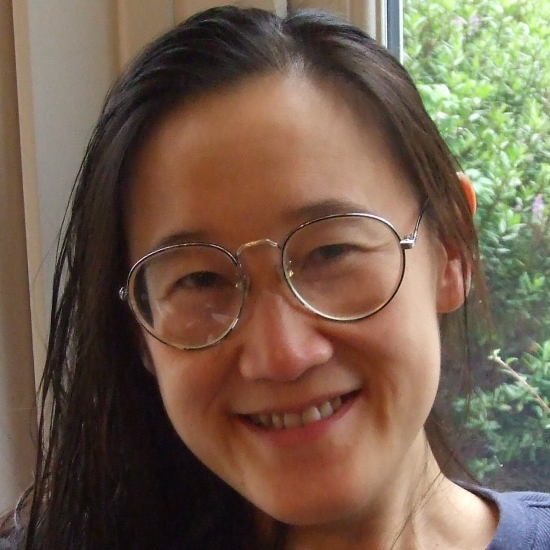
Dr Chun-wa Chung, GlaxoSmithKline, UK

Dr Chun-wa Chung, GlaxoSmithKline, UKWith a broad interest in both chemistry and physics Chun-wa studied for a BA in Natural Sciences at the University of Cambridge. Continuing within the chemistry department at Cambridge she completed a PhD in NMR techniques development, before joining Glaxo (GSK) as a postdoctoral researcher. Having provided a broad spectrum of biophysics (NMR, SPR, ITC, fluorescence) and crystallographic support to program teams, she currently leads the UK structural biology and biophysics group at GSK’s major European research site in Stevenage. The group supports crystallography and biophysical studies from HTS hit triage and mode-of-action analysis to fragment screening across a wide range of therapeutic areas and drug modalities (e.g. small molecule, biopharmaceuticals, vaccines). Her recent personal research focus has been in the field of epigenetics (epi-readers and epi-enzymes), where in additional to crystallographic support on many of these targets she has co-led drug discovery programs focused on bromodomains. |
|
| 16:00 - 16:15 | Discussion | |
| 16:15 - 16:45 |
Assessing sirtuins as drug targets in human illnesses
NAD+-dependent histone deacetylases (sirtuins, SIRT1-7) have emerged as potential therapeutic targets for treatment of human illnesses such as cancer, metabolic, cardiovascular and neurodegenerative diseases, and other age-related disorders. In Professor Mai's lab, chemically different series of sirtuin inhibitors (SIRTi) and activators (SIRTa) have been identified so far. Among SIRTi, some sirtinol analogues, obtained by replacement of the benzamide linkage of the prototype with other bioisosteric groups, have been described to induce apoptosis and/or cytodifferentiation in human leukaemia U937 cells. One of them, salermide, was well tolerated by mice and prompted tumour-specific apoptosis in a wide range of human cancer cell lines. In addition, the group designed some (thio)barbituric acid analogues (BDF4s) whose prototype, MC2141, displayed in U937 cells high apoptosis induction and showed antiproliferative effects against cancer cells including cancer stem cells. More recently, the gorup reported a series of highly specific SIRT2 inhibitors based on the 1,2,4-oxadiazole scaffold, inducing apoptosis and/or antiproliferative effects in leukaemia. In contrast to the number of SIRTi, only few SIRT activators are known. A number of 1,4-dihydropyridines (DHPs) were described by us as SIRT1 activators able to increase nitric oxide levels in human keratynocyte HaCat cells, and to ameliorate skin repair in a mouse model of wound healing. In addition, the group identified, some pyrrolo[1,2-a]quinoxalines as the first synthetic SIRT6 activators. Biochemical assays show direct binding to the SIRT6 catalytic core and potent activation of SIRT6-dependent deacetylation. Crystal structures of SIRT6/activator complexes reveal that the compounds bind to a SIRT6-specific acyl channel pocket and identify key interactions. These results establish potent SIRT6 activation with small molecules and provide a structural basis for further development of SIRT6 activators as tools and therapeutics. 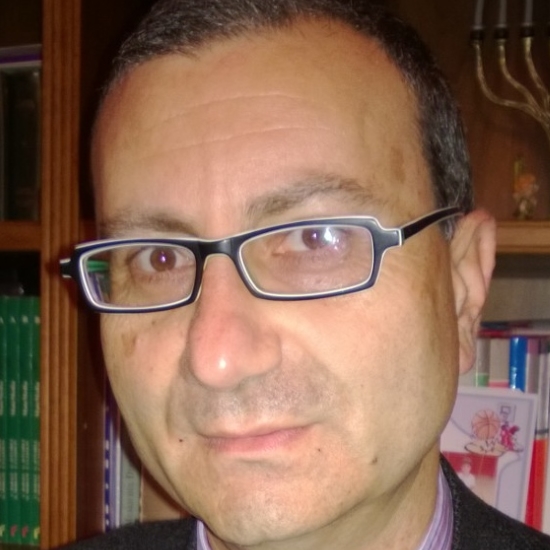
Professor Antonello Mai, Sapienza University of Rome, Italy

Professor Antonello Mai, Sapienza University of Rome, ItalyAntonello Mai graduated in Pharmacy at the University of Rome "La Sapienza", Italy, in 1984. He received his PhD in 1992 in Pharmaceutical Sciences, with a thesis entitled Researches on New Polycyclic Benzodiazepines Active on Central Nervous System, advisor Profesoor M. Artico. In 1998, he was appointed Associate Professor of Medicinal Chemistry at the same University. In 2011, Professor Mai was appointed Full Professor of Medicinal Chemistry at the Faculty of Pharmacy and Medicine, Sapienza University of Rome. He has published more than 200 papers on peer-review high-impact factor journals. His research interests include the synthesis and biological evaluation of new bioactive compounds, in particular, small molecule modulators of epigenetic targets. In addition, he is working in the field of antibacterial/antimycobacterial, antiviral, and CNS agents. |
|
| 16:45 - 17:00 | Discussion |
